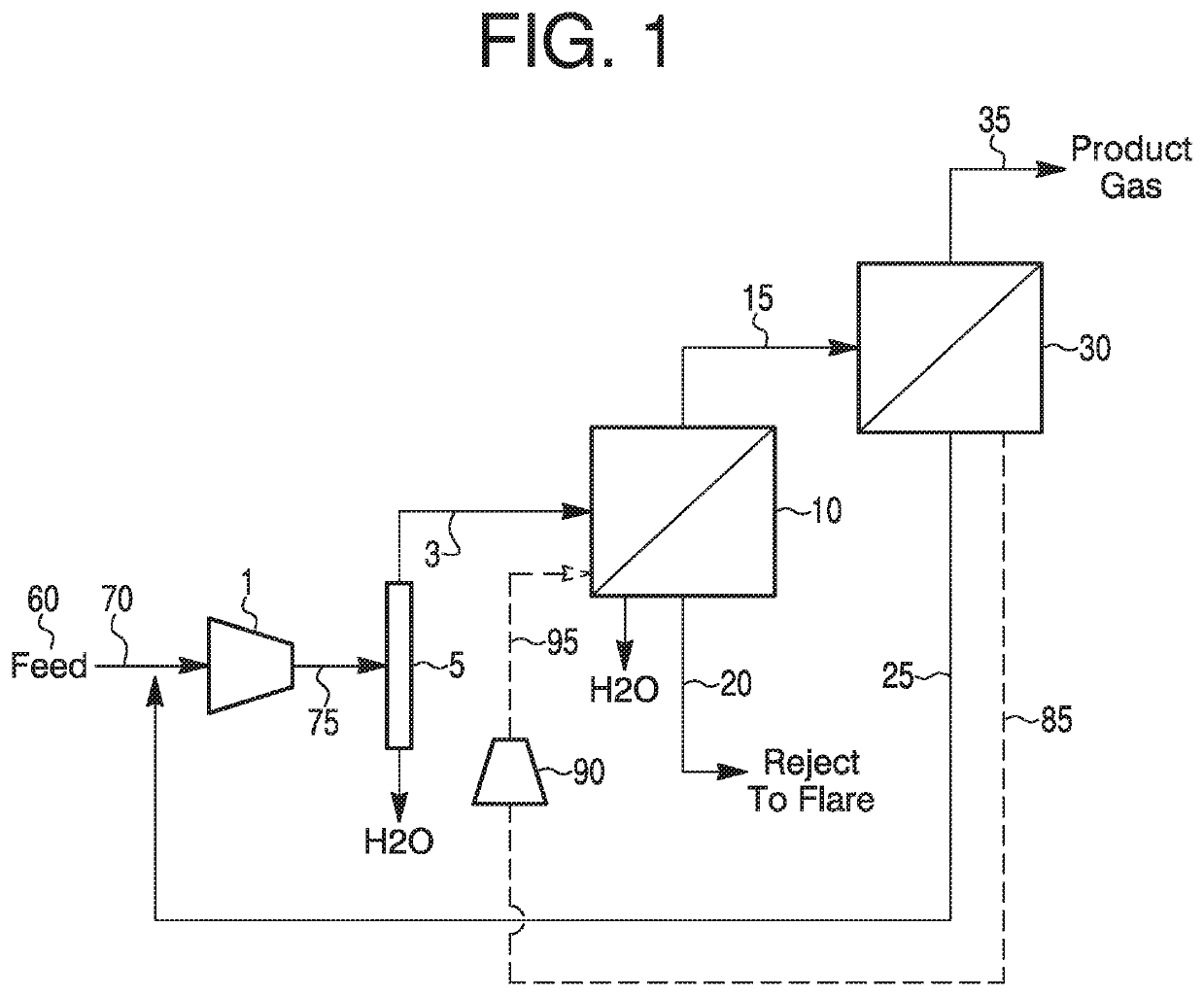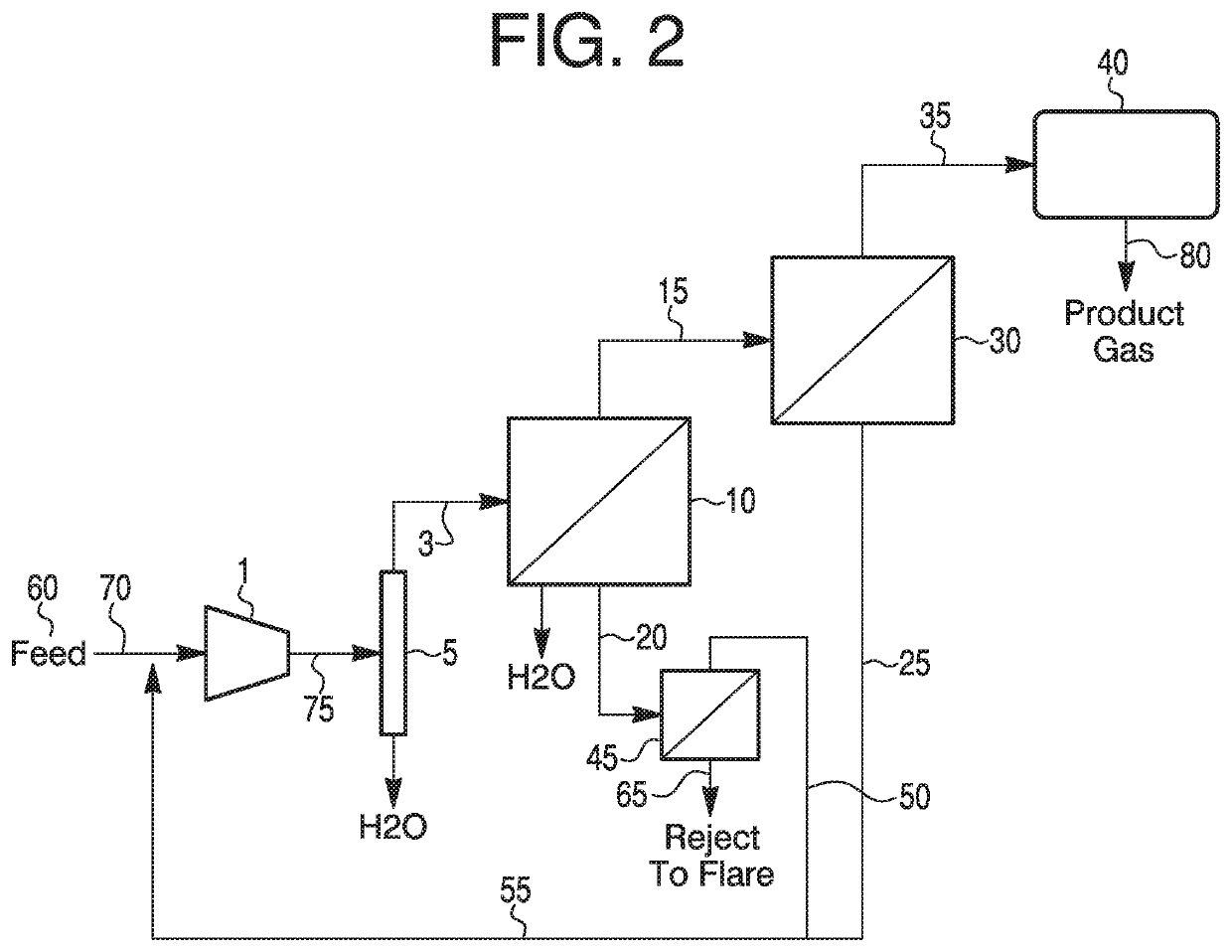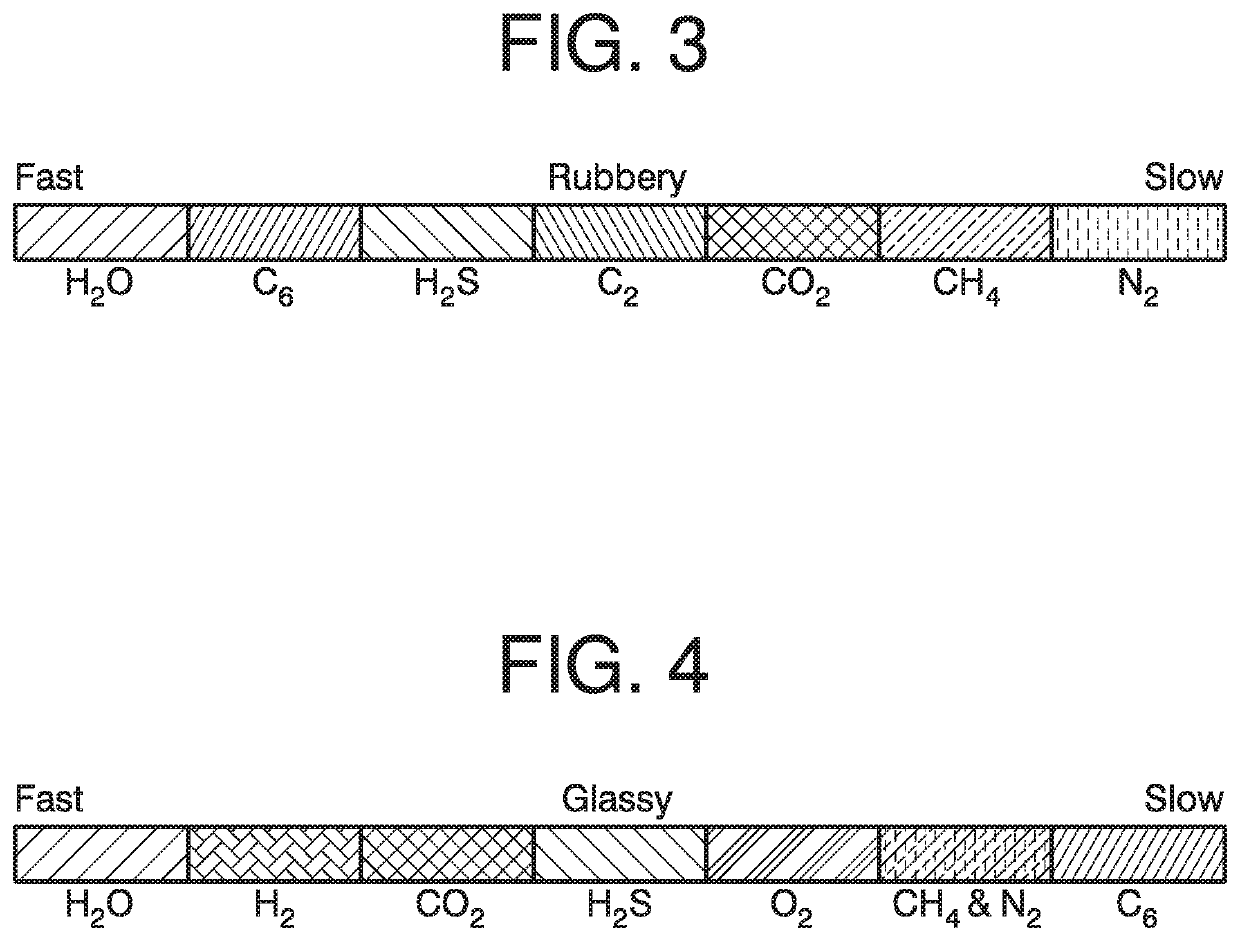Production of biomethane using multiple types of membrane
a technology of biomethane and membrane, which is applied in the direction of gaseous fuels, hydrocarbon purification/separation, hydrocarbons, etc., can solve the problems of large fraction of methane and other obnoxious contaminants in the exhaust gas that survive, and the methane that escapes into the ambient air becomes a source of air pollution
- Summary
- Abstract
- Description
- Claims
- Application Information
AI Technical Summary
Benefits of technology
Problems solved by technology
Method used
Image
Examples
Embodiment Construction
[0067]There is a disclosed method for producing biomethane from biogas, comprising: compressing a stream of the biogas in a compressor; removing water from the compressed feed by cooling; and sending the dehydrated and compressed feed into a first separation stage containing at least one polymeric gas separation membrane having a selectivity of at least 10, preferably at least 30, for H2S over CH4 to permeate a first low quality gas mixture having less than 20% methane and impurities such as H2S, water, siloxane, CO2, and VOC's, then passing the retentate or first gas mixture, having at least 60% methane from the first separation stage, to a second separation stage containing at least one polymeric gas separation membrane having a selectivity of at least 20, preferably at least 35, for CO2 over CH4 to produce a biomethane having at least 94% methane, below 3% of CO2, below 100 ppm of H2S, below 100 ppm of VOC's, below 100 ppm of siloxanes, and below 0.01 wt. % of water.
[0068]The mem...
PUM
 Login to View More
Login to View More Abstract
Description
Claims
Application Information
 Login to View More
Login to View More - Generate Ideas
- Intellectual Property
- Life Sciences
- Materials
- Tech Scout
- Unparalleled Data Quality
- Higher Quality Content
- 60% Fewer Hallucinations
Browse by: Latest US Patents, China's latest patents, Technical Efficacy Thesaurus, Application Domain, Technology Topic, Popular Technical Reports.
© 2025 PatSnap. All rights reserved.Legal|Privacy policy|Modern Slavery Act Transparency Statement|Sitemap|About US| Contact US: help@patsnap.com



